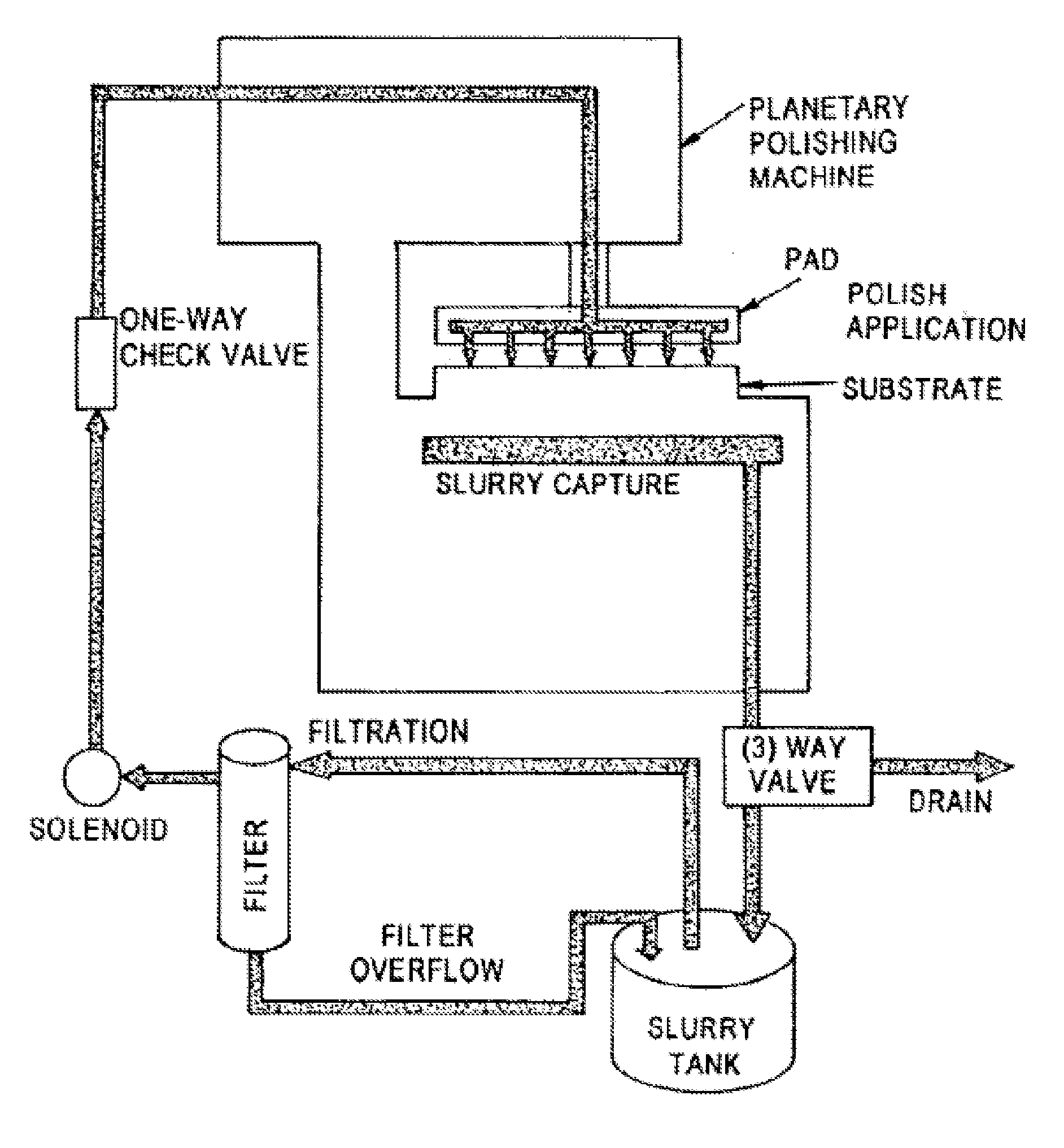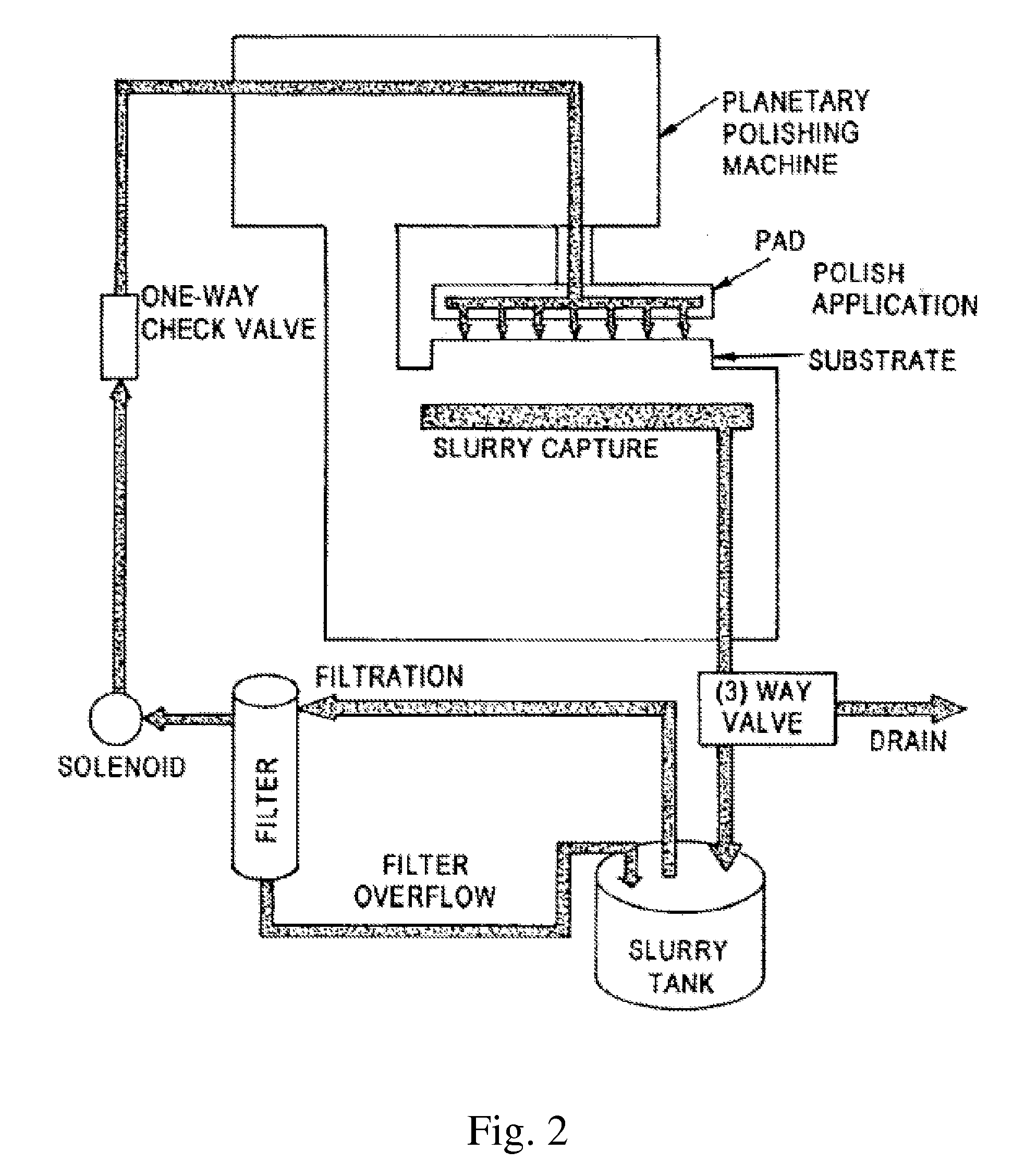Method of polishing amorphous/crystalline glass to achieve a low rq & wq
- Summary
- Abstract
- Description
- Claims
- Application Information
AI Technical Summary
Benefits of technology
Problems solved by technology
Method used
Image
Examples
examples
[0039]To demonstrate the effects of the inventive polishing method on surface roughness, the processes and compositions of two samples that were polished in accordance with the present invention and then evaluated using an atomic force microscope are presented in the following. Both samples were formed of Ohara glass and included 45-55 percent crystalline structure surrounded by a glass matrix. To produce the polished samples both were first polished for 35 minutes using a slurry comprising 29 percent volume of Ceria particulates having a 0.2-0.4 μm size. Subsequently, the surface of the samples were subjected to a final polish for 18 minutes in accordance with the invention. The polishing slurry used in the final polish was comprised of 24% Sg18R CeO2, 20% 682 SiO2, 2% Vector HTN (Triethanolamine lubricant,pH stabililizers & defoamer additives) and a remainder of de-ionized H2O.
[0040]Following the polishing method the samples were examined to determine the surface characteristics o...
PUM
| Property | Measurement | Unit |
|---|---|---|
| Fraction | aaaaa | aaaaa |
| Fraction | aaaaa | aaaaa |
| Fraction | aaaaa | aaaaa |
Abstract
Description
Claims
Application Information
 Login to View More
Login to View More - Generate Ideas
- Intellectual Property
- Life Sciences
- Materials
- Tech Scout
- Unparalleled Data Quality
- Higher Quality Content
- 60% Fewer Hallucinations
Browse by: Latest US Patents, China's latest patents, Technical Efficacy Thesaurus, Application Domain, Technology Topic, Popular Technical Reports.
© 2025 PatSnap. All rights reserved.Legal|Privacy policy|Modern Slavery Act Transparency Statement|Sitemap|About US| Contact US: help@patsnap.com



